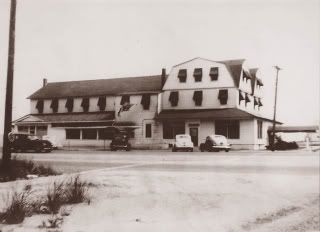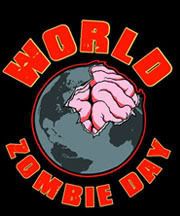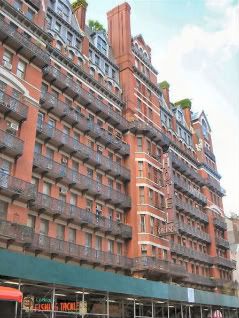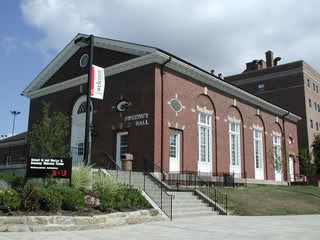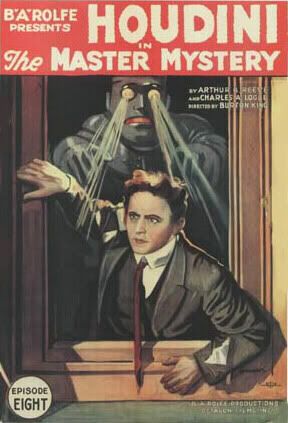
Thanks to Wikipedia
Hungarian-born Harry Houdini (nee Ehrich Weiss) was the world's greatest conjuror of magick, performing deeds beyond human comprehension. But he wasn't in any way, shape, or form a believer in the paranormal. His tricks were all cunningly designed, and his body was trained to withstand rigors that would make a Navy SEAL squeal "momma!"
Houdini lived in an age when Spiritualism ran rampant. He battled mediums in court, because he could easily see through the tricks they used to fool the gullible. After all, Harry probably invented a couple of them. He duplicated the medium's act, debunking them in the witness box and on public stages.
In fact, he was an original member of the Scientific American committee that offered a cash prize to any medium who could successfully contact the dead. No one has ever collected on the dare.
His friendship with Sir Arthur Conan Doyle ended in a bitter breakup because of their opposing views on Spirituality. Doyle was a great supporter of spooks interacting with the material plane; the Great Houdini thought contacting the spirit world was just pure hokum.
Oddly, Harry debunked a seance that Doyle attended so well that Sir Arthur though Houdini himself wasn't exposing, but channeling, the supernatural. You just can't win.
On Halloween, October 31, 1926, Harry Houdini joined the netherworld spirits he had spent so much effort fighting, dying of a ruptured appendix. He was buried in a coffin he used in his show for one of his bits of derring-do.
Houdini was interred in the Machpelah Cemetery in Queens, New York, with the crest of the Society of American Magicians inscribed on his gravestone. To this day, the Society holds its "Broken Wand" ceremony at his resting place every Halloween, the anniversary of his passing.
But the great escape artist, despite his skepticism, had one more trick up his sleeve. Before his death, he set up a code that he'd contact his wife Bess with if he could somehow wriggle through the wall separating the living from the dead. She would pass the same code on to him if she died first.
Partially, he hit upon the idea because he never passed on a challenge. But practically, Houdini came up with the encryption so that Spiritualists couldn't claim to have made contact with their great nemesis once he was on the other side and couldn't defend himself in this earthly vale.
The cypher was based on an old vaudeville trick and something that only he and Bess would know. The message was, "Rosabelle-answer-tell-pray, answer-look-tell-answer, answer-tell". Sounds kinda mysterious, but for an old show biz couple, it was simplicity exemplified.
The inside of Bess' wedding band was engraved with "Rosabelle", the name of a popular song she sang in her act when they first met. The other words represented an alphabetic code used by the magician and his assistants to pass asides without the audience knowing. In stage shorthand, the rest of the message spelled out "Believe."
Bess Houdini held annual seances on Halloween for ten years after Houdini's death, but Houdini never showed. Oh, once a Reverend Ford claimed to be in contact with Houdini and his mom, code and all, but it ended up that Bess had inadvertently let the message slip to newspaper writers the year before.
In 1936, after a last unsuccessful seance on the roof of the Knickerbocker Hotel, she put out the candle that she had kept burning beside a photograph of Houdini since his death, later saying "ten years is long enough to wait for any man."
Then again...at the moment she snuffed out the candle, a violent thunderstorm broke out overhead, with boomers, lightning, and a torrential downpour. They would later learn that the cloudburst didn't occur anywhere else in Hollywood, just above the Hotel. Was it a freak storm or did he show up after all?
Anyway, the tradition of holding a seance for Houdini continues by magicians throughout the world to this day.
The yearly Houdini Seances are most notably held at the Houdini Museum in Scranton by magician Dorothy Dietrich, who had sat for them at New York's famous Magic Towne House. Bess had asked Walter Gibson to carry on the tradition after her fruitless decade, and before Gibson died he asked Dietrich to continue the mystic circle after him.
And yes, the seances have joined the modern age of internet magick. The museum is asking that serious channelers ("no kooks, please," it requests of participants) try to contact Harry and e-mail the results to the museum.
A web seance...we think it's time to let the Great Houdini get some rest. Maybe he finally got himself into one spot where he can't escape. But then again...
According to Prairie Ghosts, some say that the shade of Houdini roams where his old Laurel Canyon home once stood. Those that pay a visit on Halloween claim to see a dark figure standing on the spectral staircases or walking in the garden grotto.
Many believe that this shadowy shape is that of Harry Houdini himself. The magician always said that if it would be possible for him to come back, he would. Maybe he has.


